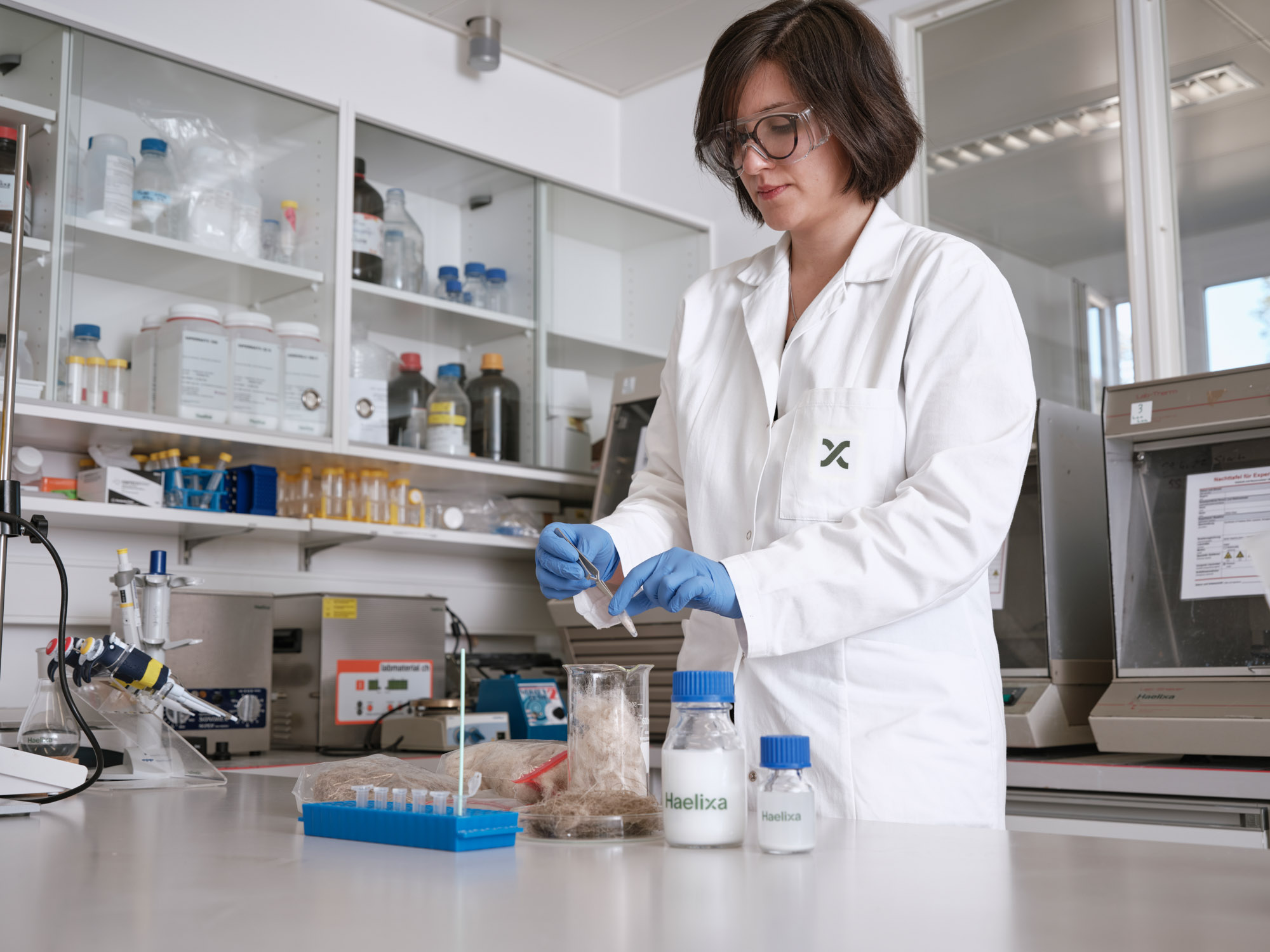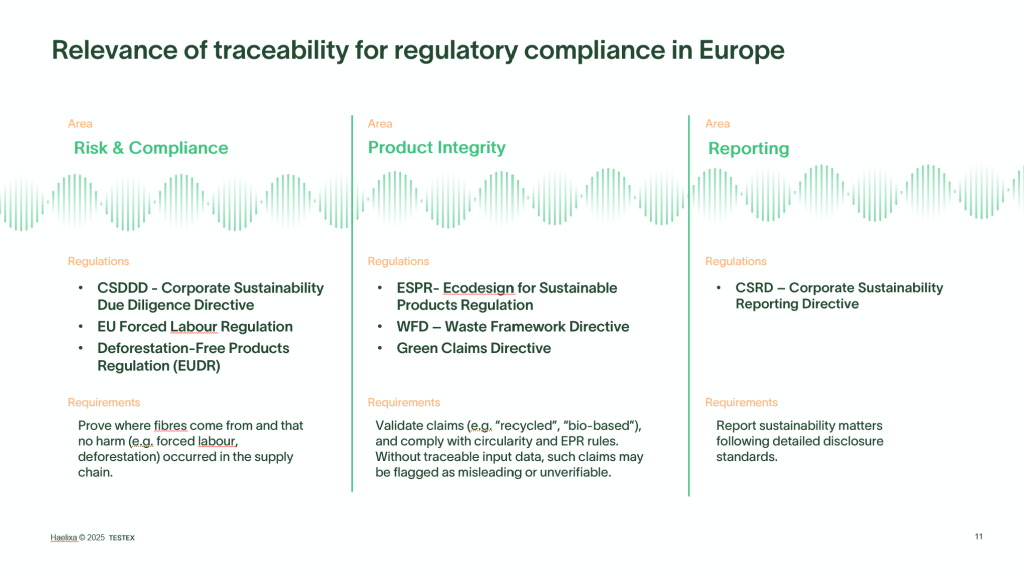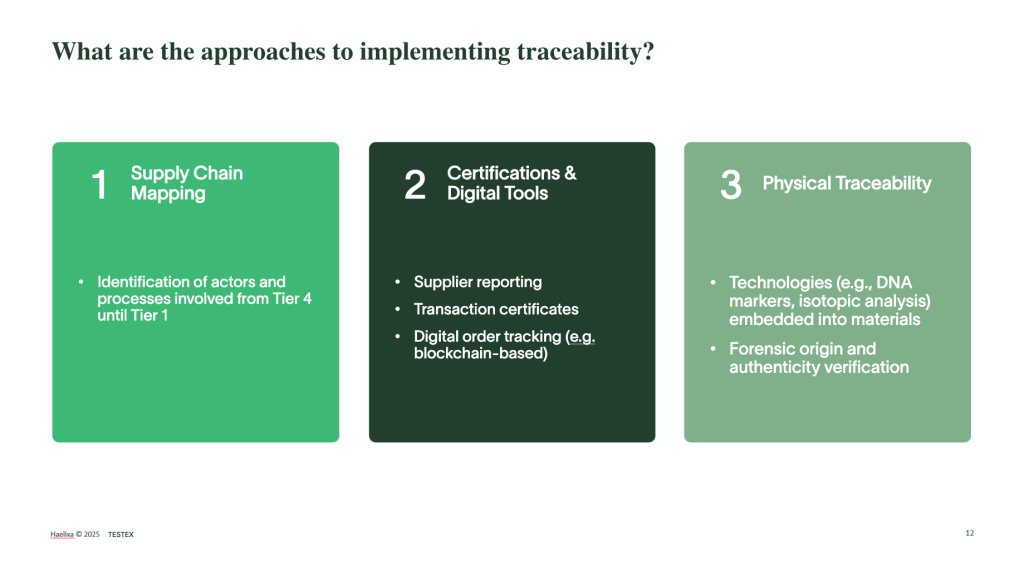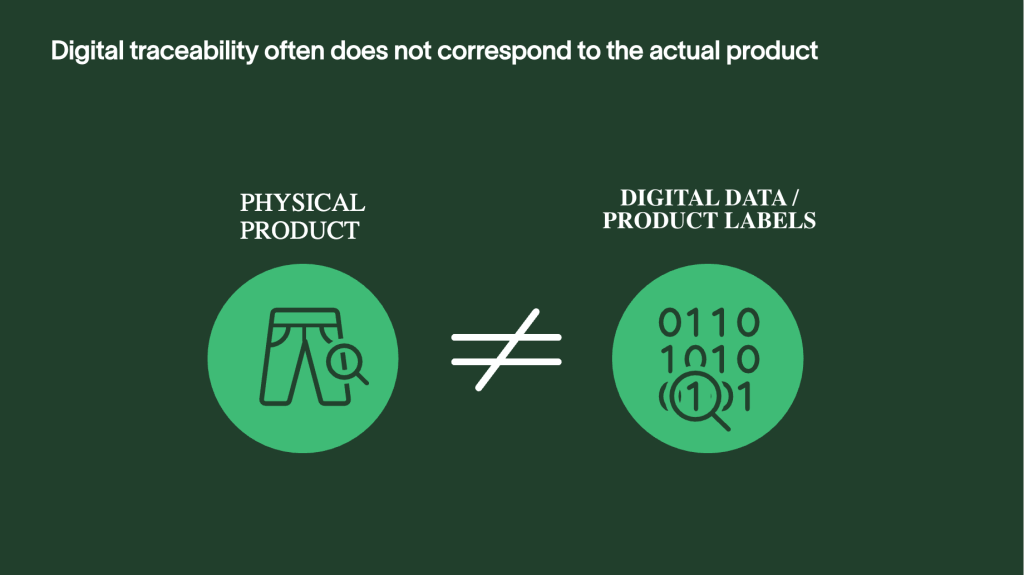In a world of growing regulatory demands and conscious consumers, proving the origin of textile products has become a strategic priority. TESTEX and Haelixa recently hosted an engaging webinar that revealed how brands and manufacturers can confidently prove product origin, strengthen supply chain trust, and stay ahead of compliance requirements.
Missed the live session?
Speakers
Mary Rose Egloff (Group Product Manager, TESTEX) walks you through the OKEO-TEX certifications that support end-to-end traceability and meet upcoming Digital Product Passport demands. Gediminas Mikutis (CTO & Co-founder, Haelixa) introduces forensic traceability using DNA markers, a powerful complement to certification, especially in complex or high-risk supply chains.

CTO & Co-founder, Haelixa

Group Product Manager, TESTEX
Agenda
- Introduction of the speakers
- Relevance of traceability for regulatory compliance
- TESTEX: Trusted testing lab and certifier (OEKO-TEX®)
- Haelixa: Physical product traceability to ensure identity preservation
- Outlook: How to start and use the right solution
- Questions & discussion
Key Takeaways
- Most brands and suppliers are just beginning their traceability journey.
- With new regulations emerging, it’s increasingly difficult to determine where to start and which solutions provide the best value.
- TESTEX and Haelixa support customers on this path by offering OEKO-TEX® certifications and physical traceability solutions aligned with DPP, CSRD, and other regulatory requirements.
How to get started:
- Define the scope of your traceability efforts: Decide which products, materials, or supply chain tiers you want to trace.
- Collect and assess existing data: Gather what you already know from suppliers, certifications, or internal systems.
- Identify potential risks in your supply chain: Look for areas with low visibility, high compliance risk, or where valuable materials are involved.
- Prioritize action on the highest-risk areas: Focus first on the parts of your supply chain that pose the greatest risk.
Want to learn more?
Feel free to reach out – or access the full webinar recording here.



